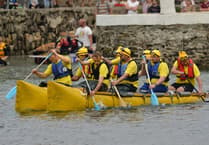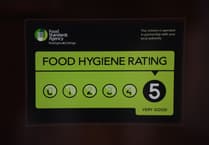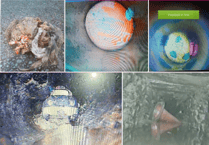Warm weather conditions spark vet warning about deadly blue-green algae in water bodies
The British Veterinary Association (BVA) is asking pet owners to take extra precautions when walking their dogs near water bodies this summer, as hot weather conditions have led to concerns about an increase in toxic blue-green algae in locations across the UK.
Contact with the toxins can be fatal for dogs.
After reports in recent weeks of dogs becoming sick after going in the water at Kilminorth Woods, South West Water carried out tests and says that the problem is not related to its network.
A spokesperson for SWW said: “We have investigated reports of suspected pollution at the Millpool and West Looe River in Looe and found no evidence of any pollution from our network, although algae was observed in the water.”
Meanwhile the utility company has reiterated its warning to dog owners to keep their pets away from the water at certain times of year at Siblyback Lake and other reservoirs in the South West.
In certain weather conditions a blue-green algae can bloom, which, even when no longer visible on the shoreline, can be present in the lake at low levels. This is toxic and potentially lethal to dogs.
The SWW spokesperson said: “Dogs are not allowed in the water at any of our reservoirs, which are sources of drinking water.
“We would also like to remind dog walkers to take note of signage advising them to prevent their dogs drinking from them, as at certain times of the year algae which may be harmful to dogs can accumulate on or near the shoreline. When this occurs, warning signs are erected by South West Lakes who manage the recreational aspects of the lakes on behalf of South West Water.”
Earlier this month, in an incident in the Scottish Highlands, a dog died after coming into contact with suspected blue-green algae at Loch Awe.
Blue green algae, or cyanobacteria, are a group of bacteria that can contain dangerous toxins which can be harmful and potentially fatal to pets, livestock and birds if ingested even in small quantities.
The algae may appear as green or greenish-brown scum on the surface of water. Dogs can swallow it by drinking water from an affected lake, river or pond or while licking their fur after going for a swim.
Symptoms of exposure can appear within a few minutes or hours, depending on the type of toxin ingested, and commonly include vomiting, diarrhoea, drooling, disorientation, trouble breathing, seizures, and blood in faeces. If left untreated, it can cause liver damage and ultimately be rapidly fatal.
Algal blooms have so far this year been reported in water bodies across the UK.
British Veterinary Association Senior Vice President Daniella Dos Santos said:
“It’s been a warm start to the summer and we have started hearing of increasing numbers of blue-green algae sightings across the UK. While a paddle in a cool lake may be your dog’s favourite outdoor activity at this time of the year, we’d urge pet owners to keep them on a lead during walks near water bodies confirmed to have algal blooms. The majority of blooms are toxic and it is impossible to tell the difference visually, so it is better to be safe than sorry.
“There is currently no known antidote for the toxins, so prompt veterinary treatment is the only way to tackle their effects and ensure a good chance of recovery for your pet. If you suspect your dog has been exposed to blue-green algae, please seek emergency veterinary treatment as soon as possible."
BVA has issued the following advice for pet owners:
• Look out for any warning signs put up by the responsible national environment agency or local authority near water bodies.
• Keep pets on a lead and by your side around water bodies known or suspected to have a blue-green algal bloom – don’t let pets swim in it or drink from it.
• If your dog has been swimming outside, wash its coat thoroughly with clean water afterwards.
• Seek emergency veterinary treatment if you’re concerned your pet may have ingested toxic algae.
• Report sightings of blue-green algae with a photograph on the UK Centre for Ecology & Hydrology’s (UKCEH) Bloomin’ Algae app.
Professor Laurence Carvalho of the UK Centre for Ecology & Hydrology said:
“The public can play a crucial role in providing a rapid, early warning to pet owners about outbreaks of blue-green algae.
“If people report sightings via the Bloomin’ Algae app with a photograph, we can quickly check if it is blue-green algae or something harmless, with correct and incorrect reports plotted on an interactive map in the app.
“App users can also set up notifications for confirmed blooms in their area.”


.png?width=209&height=140&crop=209:145,smart&quality=75)

